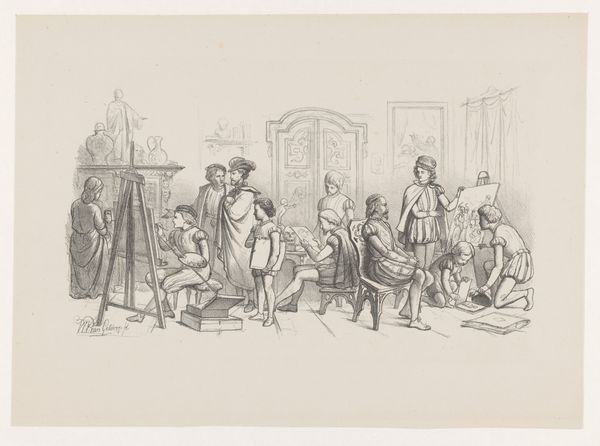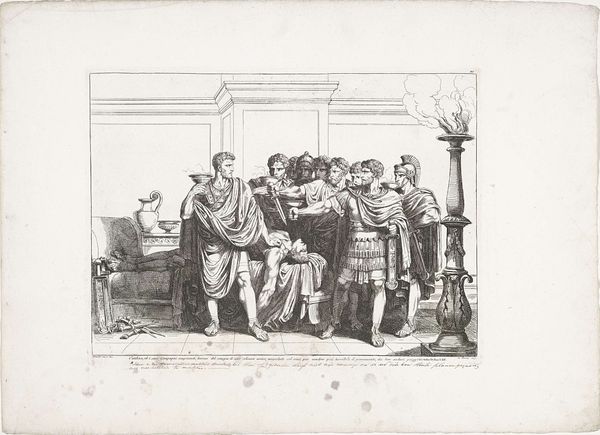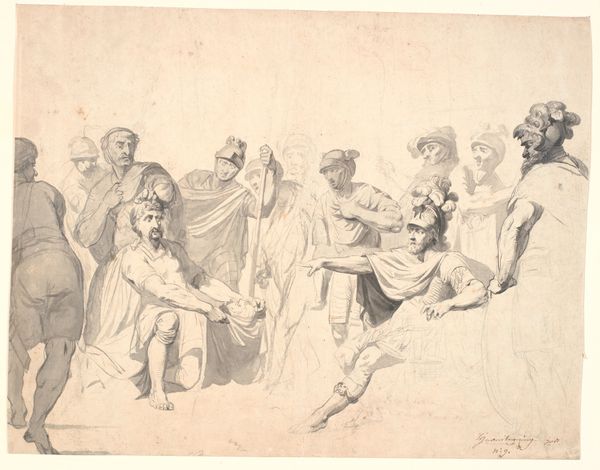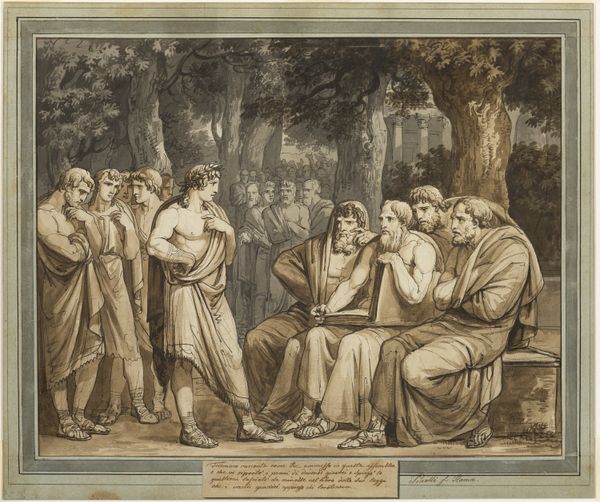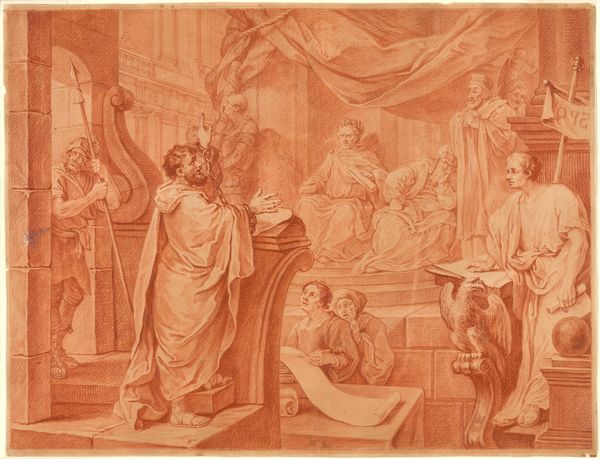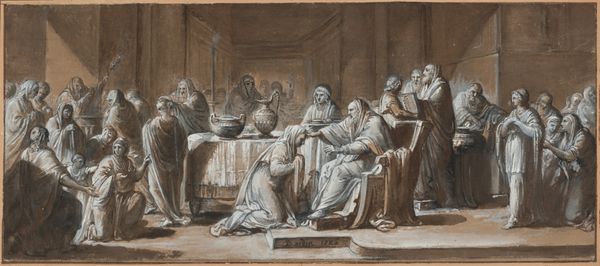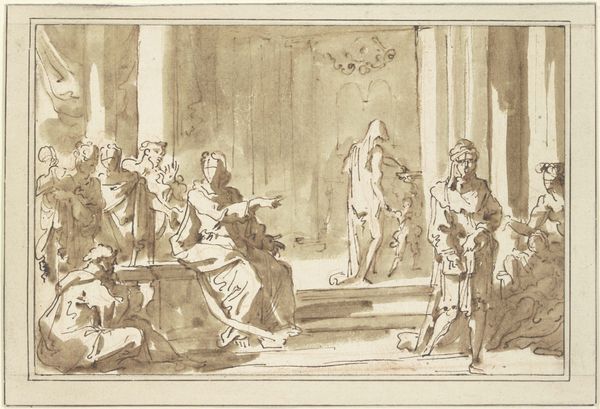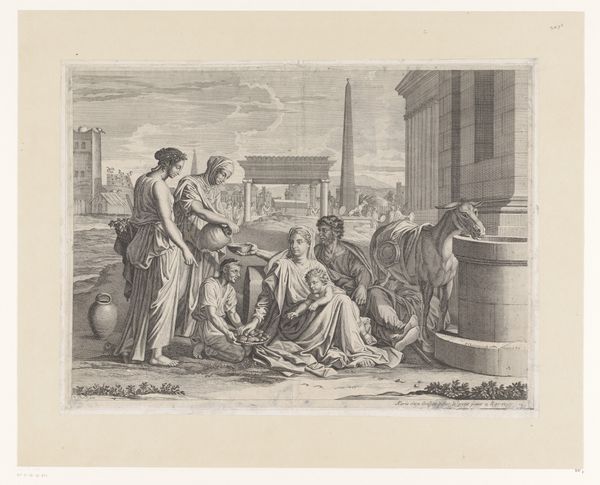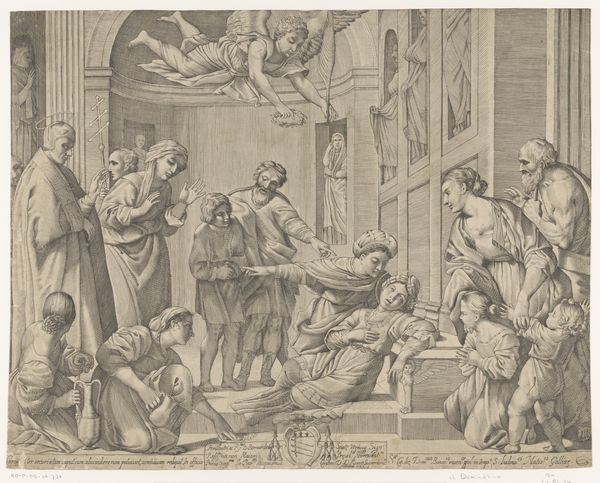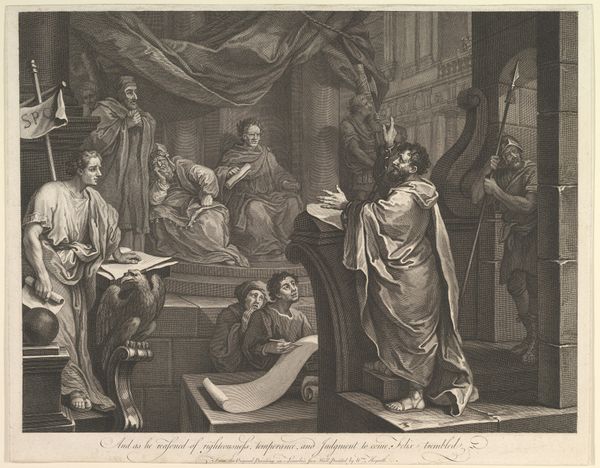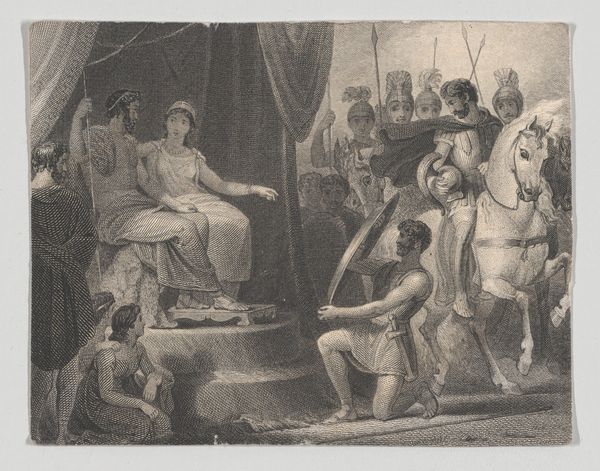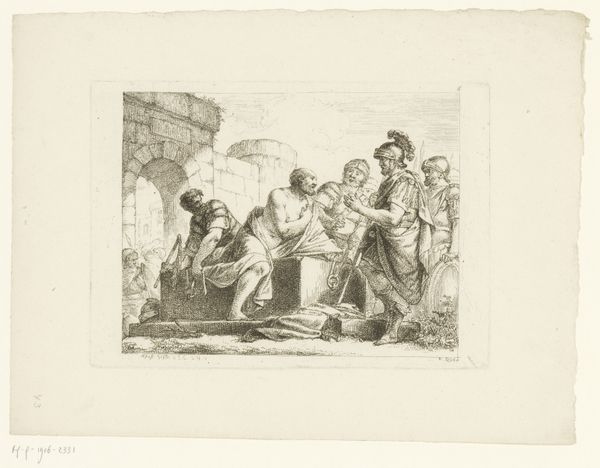
Antik scene, formentlig Odysseus, der beretter om sine hændelser for Faiakerne 1827 - 1829
0:00
0:00
drawing, paper, ink
#
portrait
#
drawing
#
narrative-art
#
greek-and-roman-art
#
etching
#
figuration
#
paper
#
ink
#
ancient-mediterranean
#
history-painting
Dimensions: 202 mm (height) x 251 mm (width) (bladmaal)
Editor: This drawing, "Antik scene, formentlig Odysseus, der beretter om sine hændelser for Faiakerne," or "Antique Scene, probably Odysseus recounting his deeds to the Phaeacians," by Martinus Rørbye, made between 1827 and 1829, utilizes ink on paper. The monochromatic wash gives it an antique feel. What stands out to you in terms of the artist’s process? Curator: The choice of ink wash is interesting. It speaks to the accessibility of materials, doesn’t it? This wasn’t an oil painting commissioned by a wealthy patron, but likely a study, a work generated within a very different mode of production. Consider the social context: Rørbye, though successful, existed within a world increasingly defined by industrialization. Does this rendering of an idealized past—the epic of Odysseus—engage with the changing modes of production of the 19th century? Editor: That’s a great point. So you’re saying the medium itself—ink, a relatively inexpensive and easily accessible material—connects to a broader shift in artistic production and consumption? Curator: Precisely! The narrative is “high art”, sure. But the work’s material reality, that speaks of a different, more widely available, level of access. The materiality of the piece throws the classical subject matter into a fresh light. How does the process affect our understanding of the image itself? Editor: It makes me wonder who Rørbye intended this drawing for. Was it for a limited audience, or could the accessibility of the medium suggest a desire for wider engagement with classical stories? Curator: Good question! The tension between the grand narrative and the humble material is key, forcing us to think about who gets to participate in the consumption and making of art, and the stories it tells. Editor: This perspective has changed how I see the work; I see more in the choice of medium. Thanks! Curator: And I think engaging with this drawing on this level brings us closer to how it might have been understood, made, and seen in its time.
Comments
No comments
Be the first to comment and join the conversation on the ultimate creative platform.

